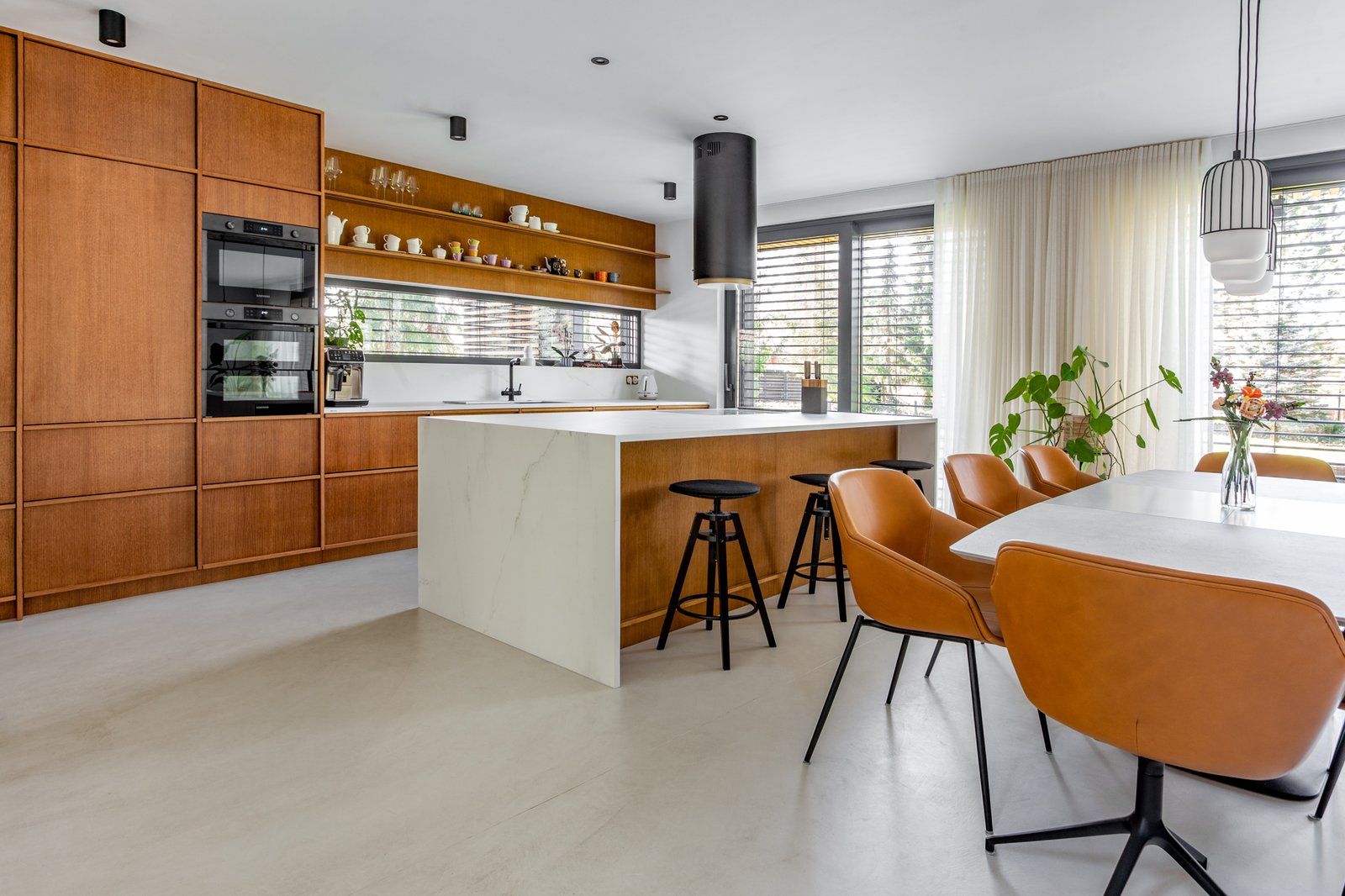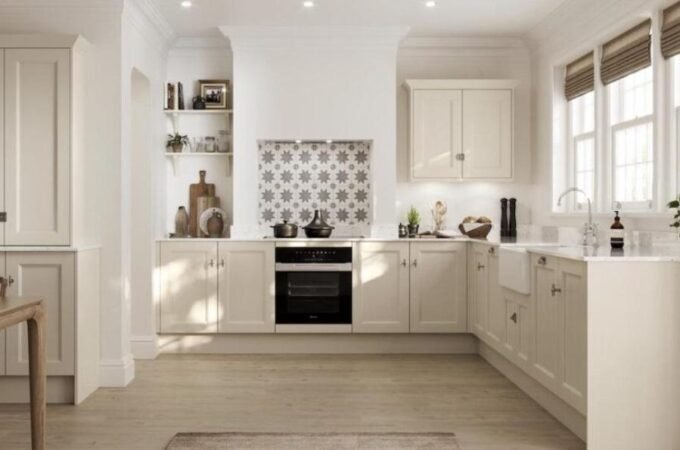
Microcement in Domestic Interiors
Microcement is an innovative finishing material that offers many advantages over traditional concrete. In this article you will learn why more and more people are choosing to use micro concrete in their homes. We will also provide practical tips on microcement application as well as how to achieve unique effects and textures. Discover the possibilities offered by microcement and create elegant and functional interiors that will impress.
Advantages of microcement over traditional concrete
As mentioned earlier, microcement and traditional concrete have many similarities, but also some important differences. One of the most important advantages of microcement is its flexibility compared to concrete. Micro concrete is more resistant to cracking, making it ideal for surfaces prone to movement and pressure, such as stairs and kitchen countertops. Concrete, on the other hand, is less flexible and more prone to cracking, which can lead to the need for repairs and conservation.
Another advantage of microcement is the speed of drying in comparison to traditional concrete. Micro concrete dries much faster, which helps speed up the entire surface finishing process. With concrete, it is necessary to wait for a long time to harden, which can delay the completion of the project. Therefore, if time is of the essence, microcement is an excellent choice.
The use of microcement in various domestic spaces
Micro concrete as flooring in the living room, bedroom or kitchen:
Microcement is an excellent material for use as flooring in various home rooms. Its industrial look adds a modern touch to interiors, while being easy to clean. Micro concrete can be used in both the living room, bedroom and kitchen, creating a cohesive and stylish space. With a wide range of available colors and finishes, microcement can be matched to any interior design.
Use microcement on bathroom walls, hallways or stairs:
Microcement is also a great solution for walls in various domestic spaces. It can be used both in the bathroom, where its resistance to moisture is extremely useful, and in the hallway or staircase, adding a raw and modern look. Micro concrete on walls creates unique textures and effects that add character to interiors.

Micro concrete kitchen countertops and furniture as an alternative to traditional materials:
Microcement can also be used to create kitchen countertops and furniture. Its durability and resistance to damage make it an excellent alternative to traditional materials such as wood or stone. Micro concrete kitchen countertops give the kitchen a modern look, and furniture made of this material brings style and originality to the interior.
How to apply microcement yourself?
The application of microcement can be done on your own, without the need for specialists. Here are step-by-step instructions on how to apply micro concrete to various surfaces:
- Prepare the surface: Make sure the surface is clean, dry and free of any dirt. If necessary, perform priming or remove the old finish.
- Apply the first layer: Using a trowel or spatula, apply the first layer of microcement to the surface. Make sure the layer is even and has the right thickness.
- Sand and level: After applying the first layer, use a sand smoother or other tools to polish and level the surface. Remember to work quickly, as microcement dries quickly.
- Apply the second layer: After the first layer has dried, apply a second layer of micro concrete. Again, make sure the layer is even and the right thickness.
- Finishing: After applying the second layer, use finishing tools such as a sponge or brush to achieve the desired texture and finish.
Necessary tools and equipment for microcement application:
- Trowel or spatula – Used mainly to apply microcement to the surface. The choice between the two depends on the preference of the applicator and the specifics of the project.
- Micro concrete mixer – This is a specialized tool for mixing micro concrete. It helps to achieve the right consistency of the mix.
- Smoothing machine – After applying microcement, a smoothing machine is used to level the surface. This helps to achieve a smooth, evenly distributed layer.
- Drill with stirrer – Used to mix the microcement with other ingredients, such as water or suitable binding agents. An agitator attached to the drill ensures thorough and uniform mixing.
- Sponge or brush – Used to clean and smooth the surface before applying microcement or to remove excess material after application.
Maintenance and care tips for micro concrete surfaces:
- Protect the surface: After the application is complete, protect the surface with appropriate protective agents, such as sealer or waterproofing. This will provide additional protection against damage and dirt.
- Clean regularly: Regular cleaning of the micro concrete surface is key to keeping it in good condition. Use mild detergents and a soft cloth to avoid scratches.
- Avoid sharp objects: Microcement can be prone to scratches, so avoid using sharp objects directly on the surface. Use coasters and saucers for hot dishes.
- Control moisture: Micro concrete is resistant to moisture, but excessive moisture can affect its strength. Make sure the room is well ventilated and control humidity levels.
Create unique textures and effects with microcement
Micro concrete is not only a functional solution, but also a great tool for creating unique textures and effects in interior design. Through various application techniques, unique patterns and textures can be created to add character and uniqueness to rooms. Microcement can be applied evenly to create a smooth surface, or with tools such as a sponge or brush to create interesting textures.
One interesting way to personalize micro concrete is to add metallic pigments and other special effects. These can create results that reflect light or imitate rust or corrosion. These additives give the micro concrete surface a unique look and make the interior unique.

Microcement as an alternative to other finishing materials
Microcement, due to its unique properties, is becoming an increasingly popular alternative to traditional finishing materials, such as ceramic tiles or wood panels. Comparing micro concrete with other materials, one can see many advantages of this innovative solution.
The first advantage of microcement is its versatility and ability to be used on various surfaces. Unlike ceramic tiles or wood panels, micro concrete can be applied to floors, walls, kitchen countertops or furniture. This allows you to achieve a consistent and harmonious look for the entire interior. In addition, microcement offers a wide range of colors and finishes, giving you more opportunities to personalize your project.
Microcement also has many other advantages over traditional materials. It is durable, easy to clean and resistant to wear and tear. Unlike ceramic tiles, micro concrete has no grout, making it easier to keep the surface clean. In addition, microcement is more flexible than wood panels, reducing the risk of cracking and damage.
Examples of projects in which micro concrete replaces other materials can be found in various parts of the house. Microcement can be used as flooring in the living room, bedroom or kitchen, instead of traditional wood panels. It can also replace ceramic tiles on the walls of a bathroom or kitchen, giving them a modern and raw look. Thanks to its versatility, microcement gives you the opportunity to create unique designs that will stand out from the rest.
How to achieve an elegant and functional look with microcement?
Microcement is the perfect material if you dream of creating a minimalist and raw interior. Its industrial look gives the room a modern character, while keeping it simple and elegant. Thanks to the smooth surface of micro concrete, you can achieve a consistent and harmonious look for the entire interior. Whether you want to use microcement on the floor, walls or kitchen countertops, you can be sure to create a unique and stylish interior.
Microcement gives you the opportunity to bring a touch of luxury and sophistication to your interior by adding special effects and metallic pigments. You can experiment with different application techniques to create unique patterns, textures and lighting effects. Adding metallic pigments or other special effects will allow you to achieve a micro-concrete surface that reflects light or imitates rust or corrosion. This will give your interior a unique character and make it a real masterpiece of design.




